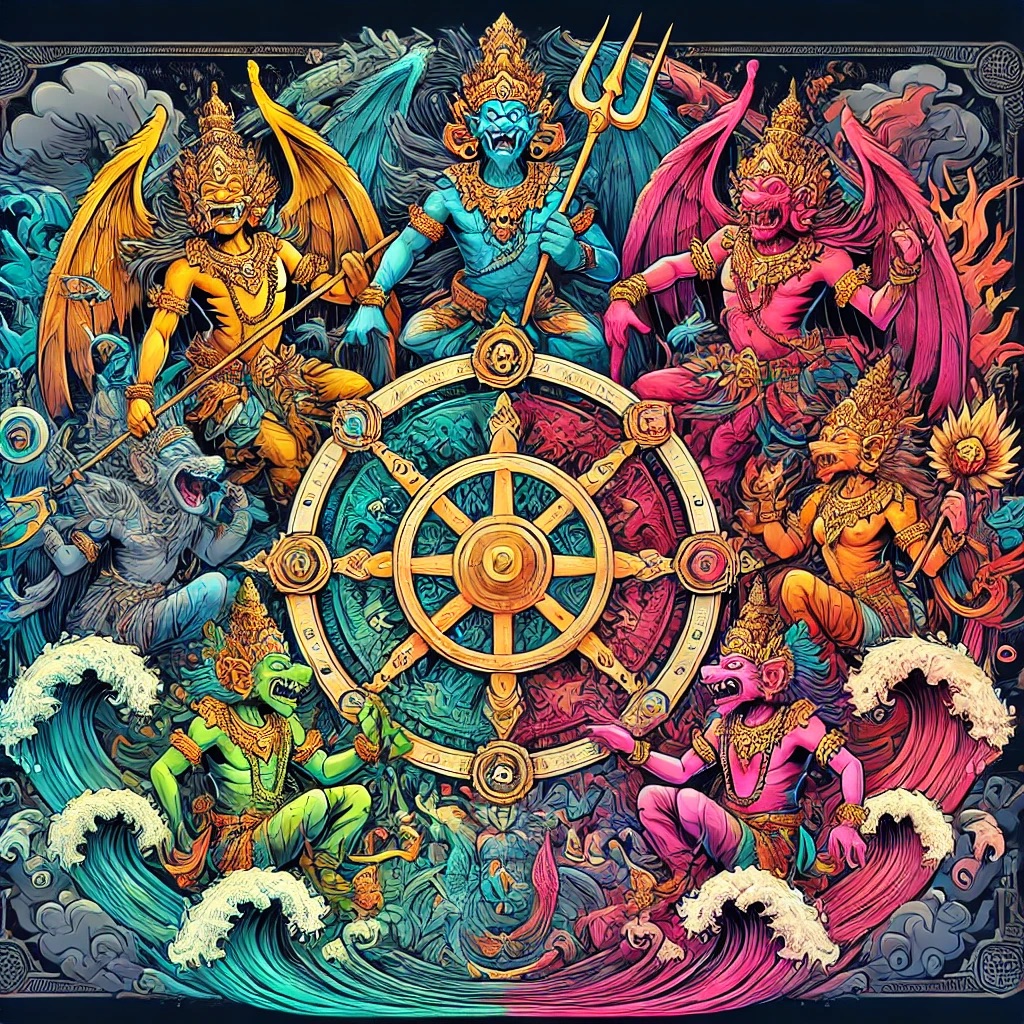Bali, known for its rich cultural heritage and spiritual depth, has a unique system of cardinal directions that plays a significant role in the island’s Hindu practices. These nine directions, or “Arah Mata Angin,” are not just geographical markers; they are imbued with spiritual meanings and are associated with various temples (pura) that serve as centers of worship. Understanding these directions provides insight into the Balinese worldview and their connection to the divine.
The Origins of the Nine Directions
The concept of the nine cardinal directions in Bali is believed to have been established by the island’s early Hindu settlers, who integrated their spiritual beliefs with the natural landscape. This system was likely influenced by ancient Indian cosmology, which emphasized the importance of directions in spiritual practices. The directions were formalized over time, with each direction corresponding to specific deities, colors, and temples. This system reflects the Balinese belief in harmony between the physical and spiritual worlds.

Meanings of the Nine Directions
| Direction | English Color Name | Balinese Color Name | Temple in Bali | Meaning | Symbolizes | Associated God |
| North | Black | Selem | Pura Batur | Protection and preservation | Water | Wisnu |
| Northeast | Blue | Pelung | Pura Besakih | Balance and harmony | Earth | Sambhu |
| East | White | Putih | Pura Lempuyang | Purity and new beginnings | Fire | Iswara |
| Southeast | Pink | Dadu | Pura Goa Lawah | Abundance and prosperity | Air | Maheswara |
| South | Red | Barak | Pura Andakasa | Creation and vitality | Life | Brahma |
| Southwest | Orange | Jingga | Pura Uluwatu | Transformation and change | Spirit | Rudra |
| West | Yellow | Kuning | Pura Batukaru | Knowledge and enlightenment | Earth | Mahadewa |
| Northwest | Green | Gadang | Pura Puncak Mangu | Growth and renewal | Nature | Sangkara |
| Center | Multicolor | Pancawarna | Pura Pusering Jagat | Unity and balance of all elements | Harmony | Shiva |
Today, the nine cardinal directions continue to play a vital role in Balinese culture and spirituality. Each pura associated with these directions remains an active site of worship and community gatherings. Festivals, ceremonies, and rituals are regularly held at these temples, drawing both locals and tourists who seek to understand and participate in the rich spiritual traditions of Bali. The preservation of these practices reflects the Balinese commitment to maintaining their cultural heritage and spiritual beliefs in a rapidly changing world.
When Cardinal Directions Are Used?
- The cardinal directions are an integral part of various Balinese ceremonies and rituals. Offerings were often placed in a particular direction to honor the relevant deity. For example, at temple ceremonies, offerings may be oriented north to invoke Vishnu’s blessings.
- The design and layout of temples (pura) in Bali are often in line with these directives. Each temple is strategically positioned to fit a specific direction, thus enhancing its spiritual significance.
- In daily offerings (Canang Sari), the placement of items is influenced by the direction of the wind. Each direction was associated with a particular color and symbol, which was included in offerings to attract blessings from the respective gods.
- During major holidays, such as Galungan and Kuningan, the cardinal directions guide the placement of decorations, altars, and offerings. This ensures that spiritual energy is directed appropriately.
The nine cardinal directions in Bali are more than just geographical markers; they embody the island’s spiritual essence and cultural identity. Each direction, with its associated color, temple, and meaning, contributes to the rich tapestry of Balinese Hinduism. Understanding these directions offers a deeper appreciation of Bali’s unique spiritual landscape and the harmonious relationship between its people and the divine.






Comments (1)
How to Make a Canang? - indonesiapusaka.comsays:
February 2, 2025 at 1:37 pm[…] Flowers (bunga) – Each flower color represents different aspects of divinity based on the Hinduism cardinal […]